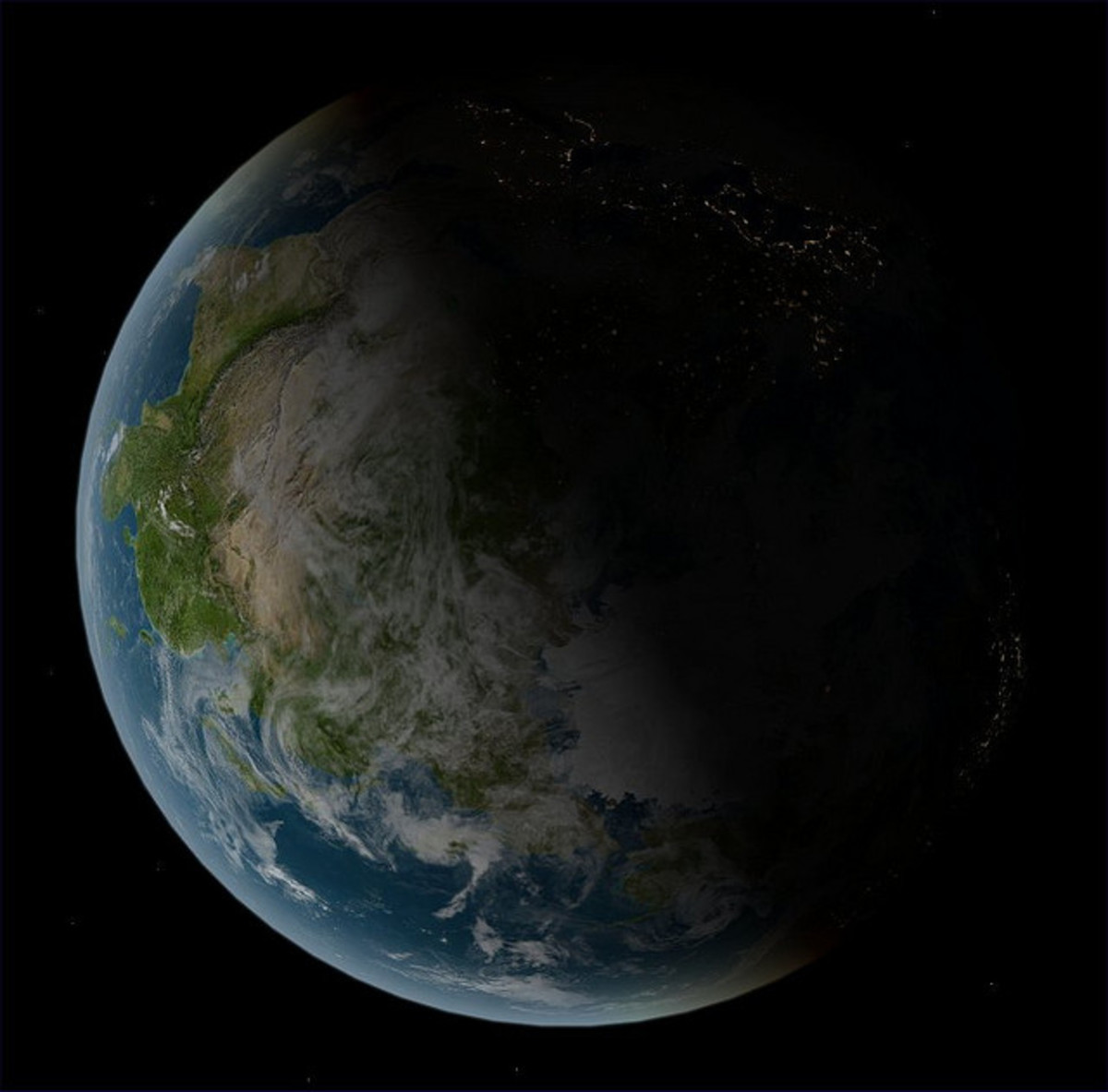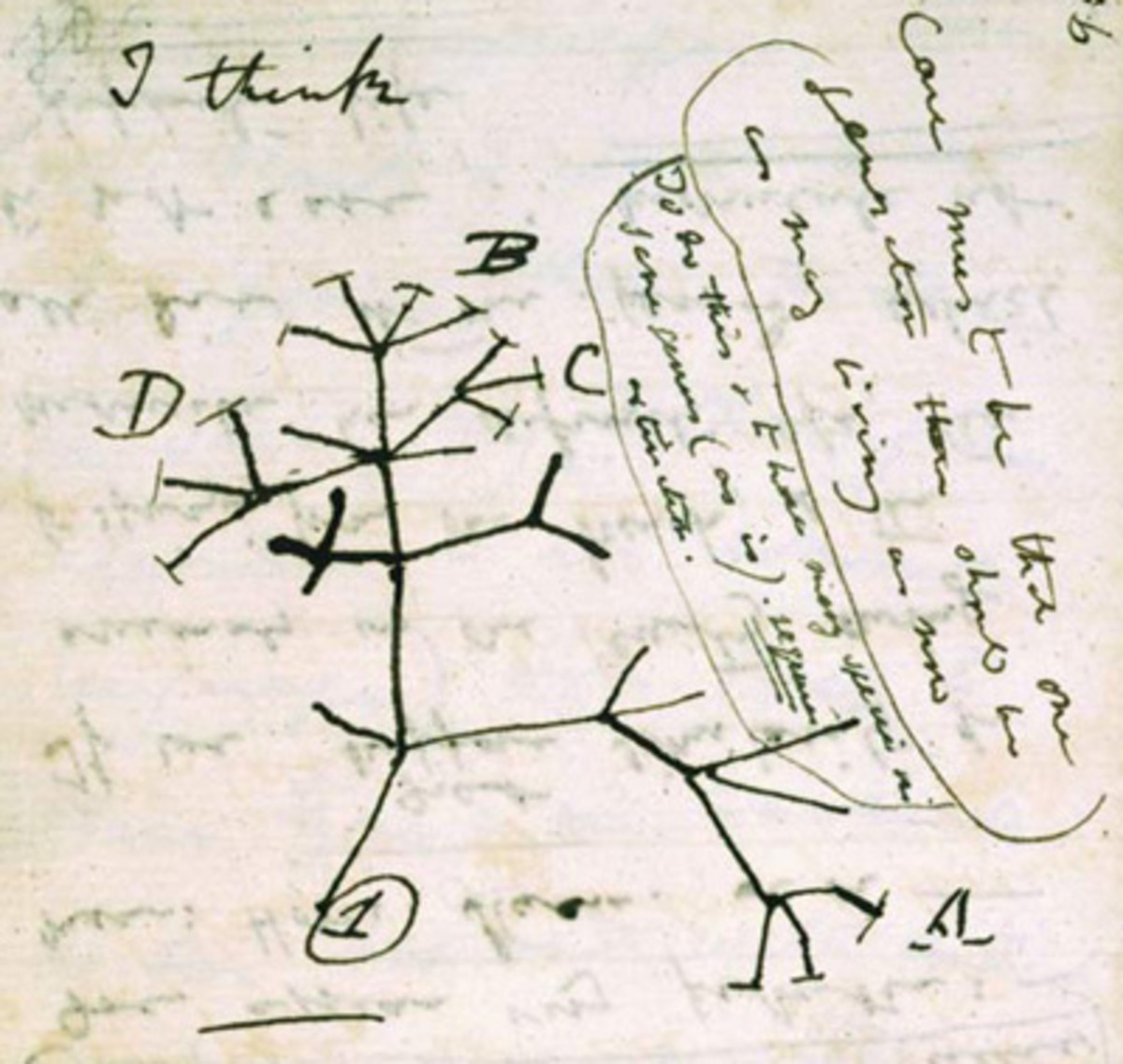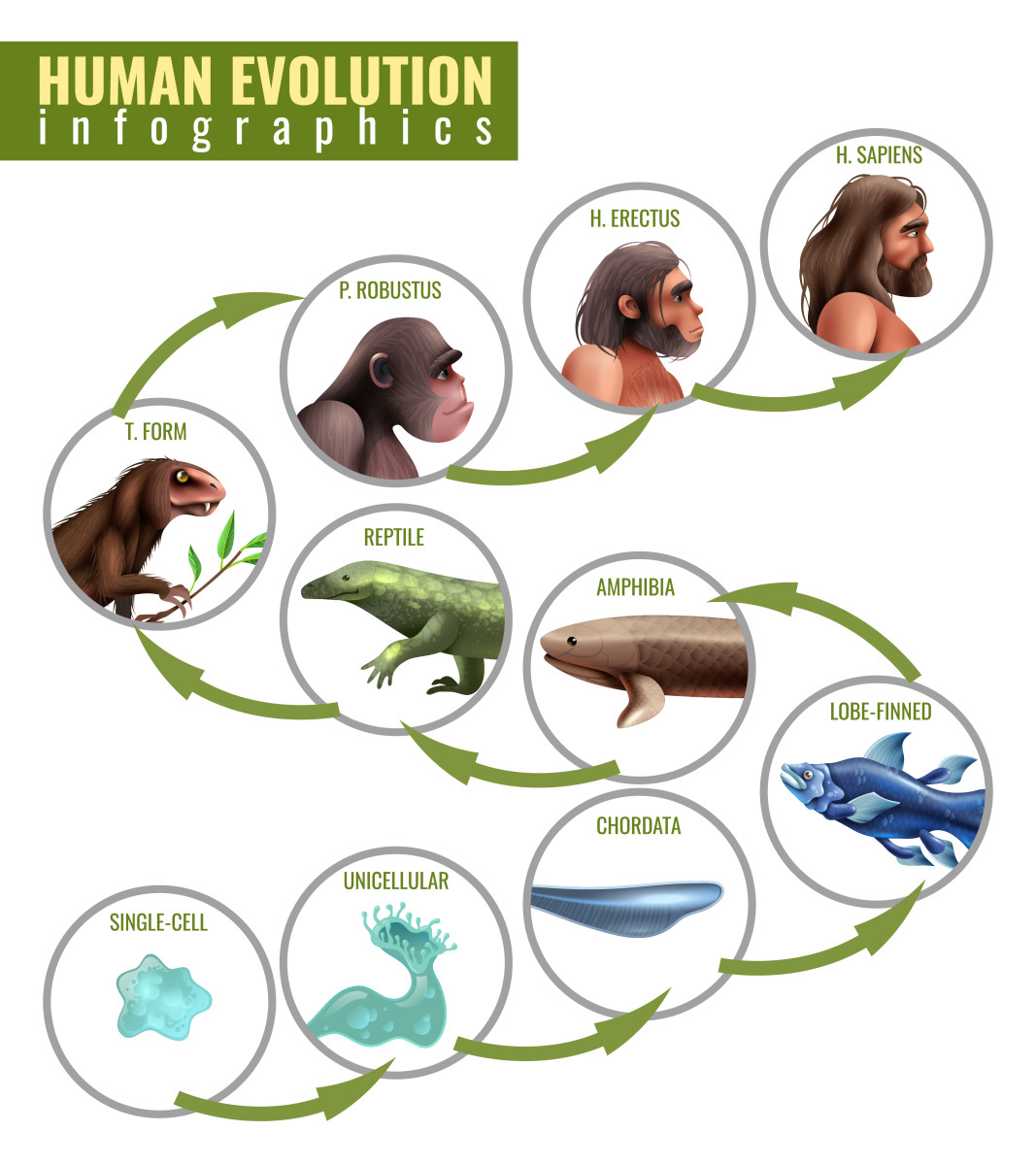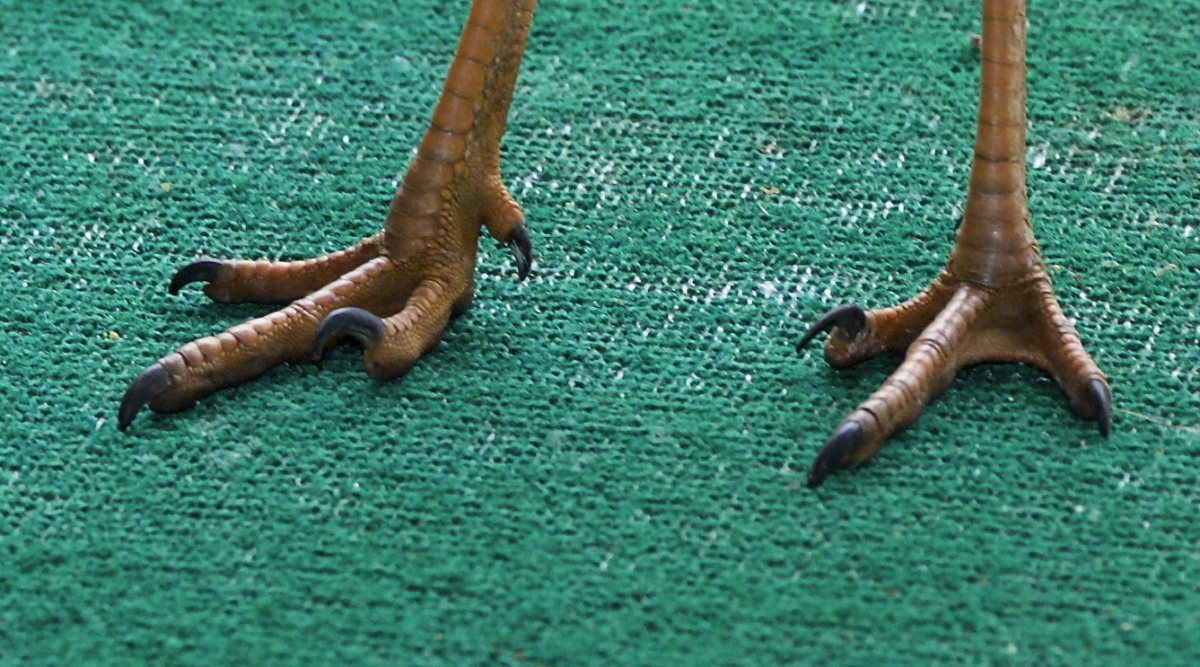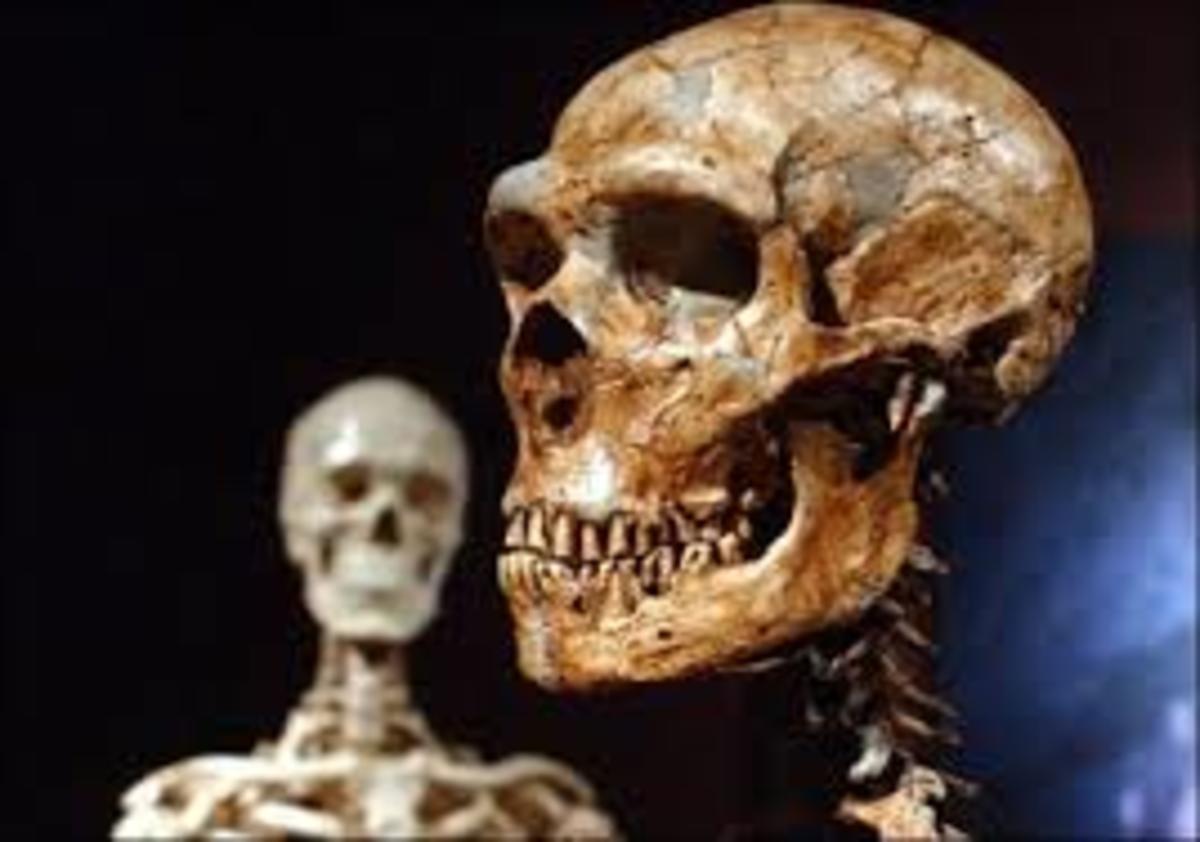Future Evolution: 10,000 AD
Into The Future

Surviving The Test Of Time
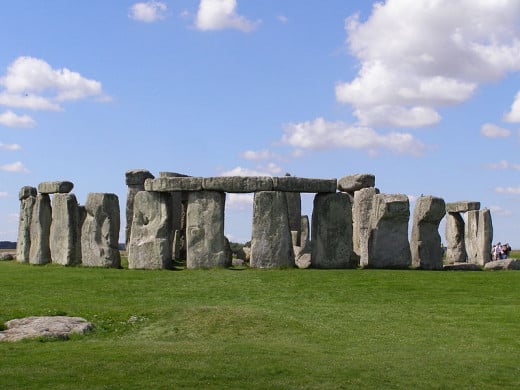
Time Travel
Imagine if it were possible to travel forwards in time. Not just centuries mind you, but millennia. What kind of world would you arrive in? What sort of creatures would you discover? This is my own rather fanciful notion of what a future Earth could look like based on various literature on the subject that I’ve read down the years.
In my previous article, I took the time to outline a hypothetical human extinction scenario, involving the sudden reversal of the Earth’s magnetic field. Of course, to call it extinction is wholly inaccurate, as Homo sapiens did manage to survive, albeit only just. Instead, it was humanity’s crowning achievement; civilisation that disappeared forever, crumbling into decay and ruin.
So, let’s imagine that we can travel forward 10,000 years to at least see what has become of our world. Our time capsule lands in what was once Southern England, in fact not too far from the ancient monument of Stonehenge, which, incredibly still stands. Although in this era, the gigantic stones no longer stand in the midst of wide open grassland, instead they’re hidden in amongst vast swathe of deciduous trees that cover virtually the whole of Southern England. They belong to species that we would recognise oak, lime, beech and ash, although in their midst are trees that were imported into England by man such as horse chestnut, Norway maple and sycamore. Our curious traveller notices a fallen oak, its giant trunk snapped in two about metre from the ground. The felled tree was covered with a green carpet of moss, with fungi sprouting in places. It may not be immediately obvious to our time traveller, but the felled oak was a sure sign that the forest had been here for a long time. In the time of humans, oak trees like this rarely became ancient enough to fall on their own. Normally trees like this fell to chainsaws rather than the processes of time.
The Return Of The Forest
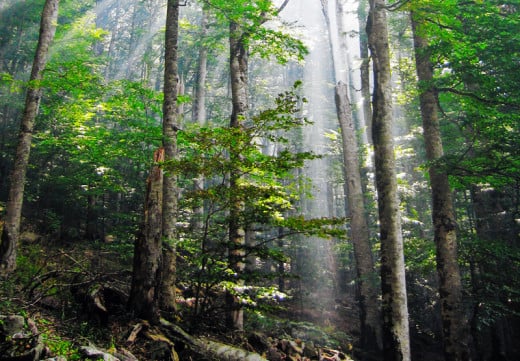
Exotic Species
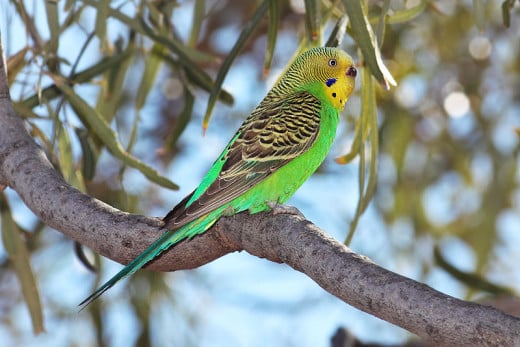
A Basic Guide To Eutrophication
A Strange New World
After the demise of humans, towns, cities and other former settlements became essentially empty spaces, ripe for botanical colonisation. Grasses and herbs were the first hardy pioneers. After a year or so, Scots pine, birch and other short lived trees took hold. As conditions changed, different species competed for light and space. After half a century, the forest had recovered sufficiently enough for the grasses to make way and for shade tolerant plants like bilberry and moss to return. Then, with a true forest now established, giants such as oak, lime and beech returned.
Moving through the undergrowth, our traveller notices that the forest is awash with bird song. Some of it belonged to a familiar species such as robin and blackbird, but the forest had gained some new and exotic species. Flocks of wild budgerigars moved through the trees, calling as they went. There were also ring necked parakeets, and small dog sized deer called muntjac, all of whom serve as a legacy to the human era. Somewhere in the undergrowth, a wolf, a direct descendant of man’s former best friend, the domestic dog appraises our traveller before moving on. The lack of fear shown by the canine was a sure sign to our traveller that no human like them has walked this way for a long time.
Here and there, our traveller glimpses more and more signs of man’s influence on the biosphere. Grey squirrels, rats, mice, voles, rabbits, fallow deer, Turkey oaks, Japanese knotweed and rhododendrons were once aliens in this land, now with a secure foothold, they were permanent residents. The overwhelming lesson was that once one disturbs the balance of nature, it can never go back to how it once was; instead it evolves in a whole new direction, eventually creating a whole new balance.
Here and there, a few signs of man’s industrial prowess still linger, as well as Stonehenge; there are ruins of other stone buildings, such as medieval churches. Ironically, stone, whilst being an ancient building material was also the best in terms of standing the test of time. The only remnants of the modern age were a few fragments of glass and plastic buried in the greenery and dirt. A far more disturbing relic lay in pools of water that had formed where old stone walls had long since collapsed. The usual collection of reeds and lilies however, did little to hide the thick algal bloom that covered the water like some sickly carpet. It was a classic case of Eutrophication, even now, more than ten millennia after the last farmers, the artificial nutrients they had used to fertilise their crops, were leaching out of the land and into the lake. As a result, the miniature ecology was grossly overstimulated, and thus lethal to any unfortunate animal that happened upon and drank from it.
In the aftermath of the mass extinction, some creatures bounced back remarkably quickly. Animals such as rabbits, hare and game-birds, now free from the perils of human hunting were very common. Larger mammals on the other hand, reproduced so slowly that their recovery had taken much longer. However, as well as the muntjac and fallow deer, there were also larger red deer, moose, and even the descendants of domestic horses, pigs and cattle. Predators on the whole were rare, although there were scattered populations of foxes, wild cats and dogs. Birds of prey were also quite rare, except for a few aggressive looking crows. As the mass extinction reached its climax, the food chains that had supported specialised large predators like lions, tigers and cheetahs had collapsed, resulting in their rapid extinction.
Our World 10,000 Years In The Future
From The Street Into The Future
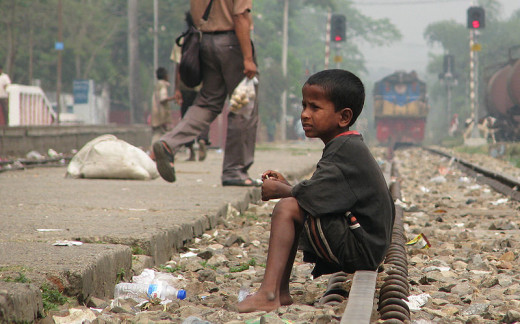
The Past Becomes The Future
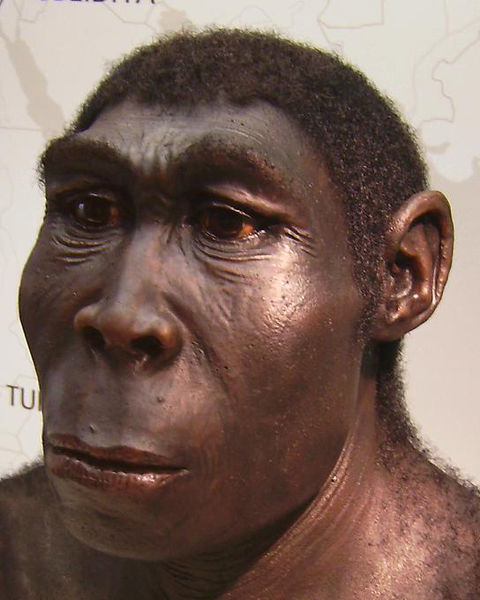
Man's Children
Now, you may remember that in my previous article, I mentioned that Homo sapiens did manage to survive the mass extinction, even if their civilisation didn’t. The survivors though, came, mostly from what our time traveller might describe as the ‘underworld of human society’. These humans, or more accurately children had spent their entire lives living in the drains, sewers of some of the largest cities in the world. These so called ‘sewer kids’ were living off the garbage of the modern world long before any sort of collapse. For a while at least, they may not have noticed any significant change.
Deep in their dark and dank world, without access to the amenities of more fortunate contemporaries, they lacked higher culture and learning. In order to remain hidden, they had to remain silent, thus, over successive generations they gradually lost perhaps humanity’s most precious gift, language.
You may think it odd that natural selection would allow such useful commodities to disappear, but being smart is expensive. Our enlarged brains were the gas guzzlers of the natural world, consuming more than a sixth of our body’s energy supply. In this world, being smart was no longer as useful as being able to run quickly or see and smell sharply. Within just 10,000 years, man’s children had already lost language and higher consciousness.
Of course, our time traveller isn’t yet aware of any ‘human’ presence, but all that would change with the discovery of a fresh fallow deer carcass in a small woodland clearing. Our hardy traveller goes to investigate, but is startled by a rustling sound in the undergrowth. Instinctively he or she retreats to cover so that they can watch whatever emerged from relative safety. Something emerged from the green, a slim, upright ape like creature that at first glance looked for all intents and purposes like naked humans. But a more thorough inspection proved that the creature in many ways was more ape than human. She possessed fine orange and brown hair that covered her pale skin, with her hair and crotch hair being slightly darker. Her movements were jittery, cautious, almost cat like and her eyes dark and seemingly soulless. Indeed a closer look indicated that this creature despite first appearances was not human at all. Her ancestors though, once were.
More creatures- males, females and young emerged to begin work on the deer carcass, constantly looking around though, almost as if they expected something incredibly terrifying to suddenly spring forth from the gloom. Our traveller may wonder exactly what is that they were so afraid of. One of the males quickly hacked off a limb with a crude stone tool, before an unheard noise compels the group to dart rapidly back into the undergrowth. But the presence of Homo sapiens in this strange, yet familiar world was akin to that of a long dead ghost. Thus our traveller’s journey must come to an end.
More to follow…
© 2013 James Kenny

